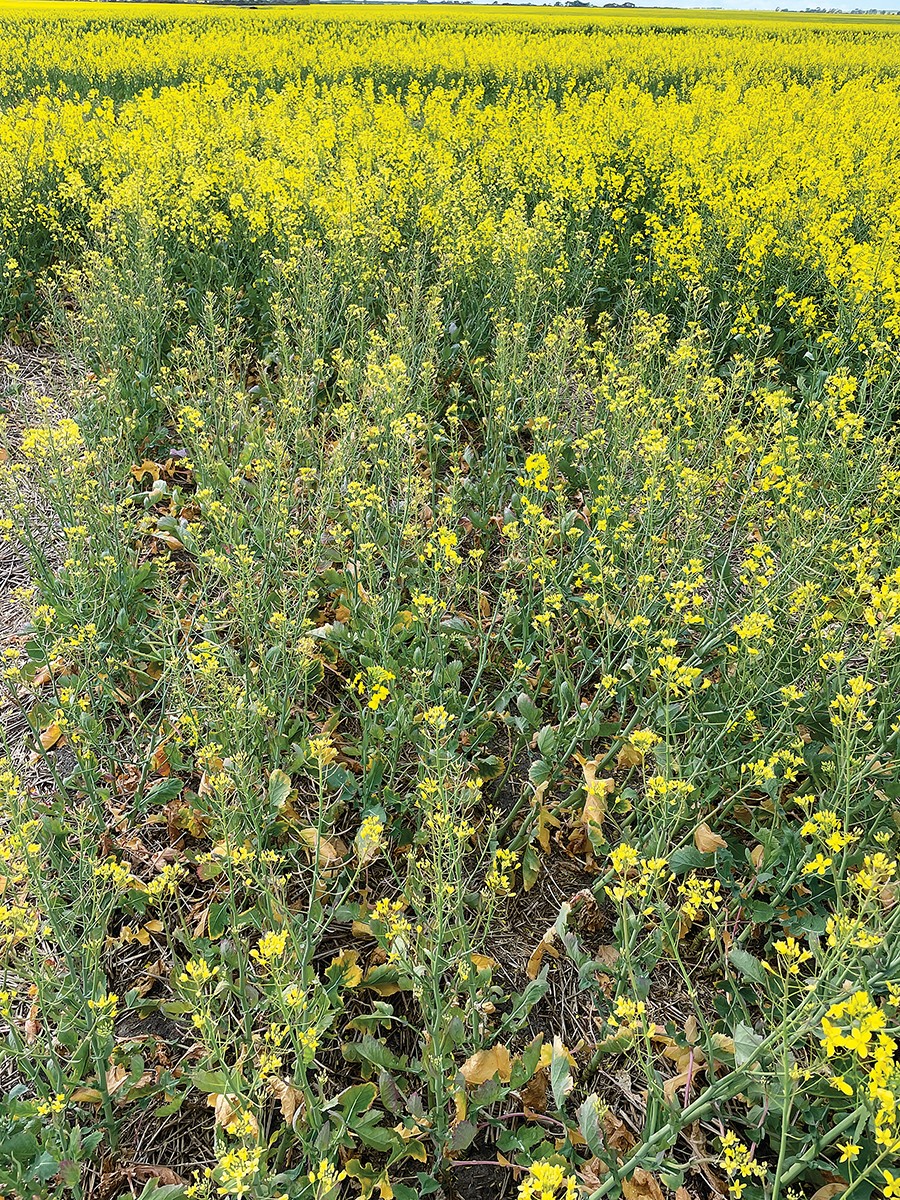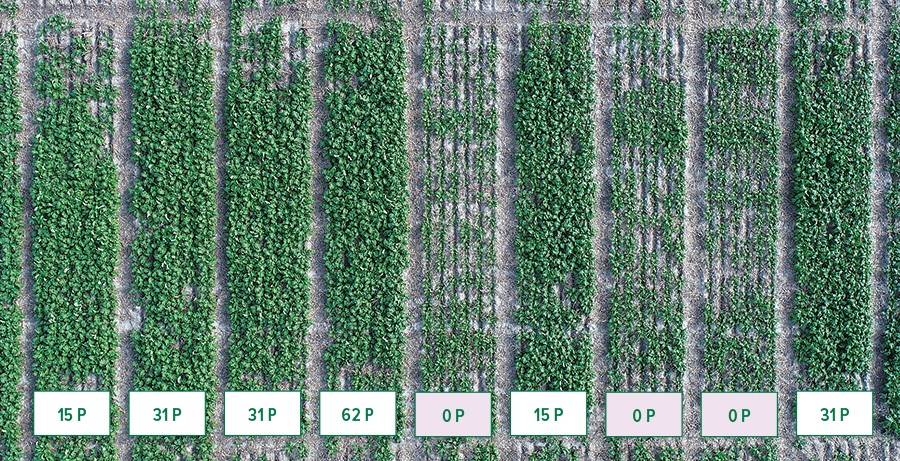Key points
- Yield responses to nitrogen will be limited if other macronutrients are deficient.
- Balanced nutrient applications, such as applying at least 150 kilograms of nitrogen per hectare with 15 units of phosphorus and 30 units of sulfur, was generally most profitable across contrasting sites and seasons.
- Any single macronutrient deficiency can limit yield, but soil testing can help identify likely limiting nutrients.
Setting up a crop to perform at its best always takes groundwork, but to push the boundaries of canola performance in high rainfall zones does it take more?
As farming system and agronomic improvements boost canola yield performance in the HRZ, the focus is shifting to optimising nutritional inputs required by these larger crops.
While growers are increasing rates of nitrogen application in line with this increased potential, there is uncertainty as to whether other macro or micronutrients may become limiting as yield potentials increase to greater than three tonnes per hectare.
A GRDC – invested Department of Primary Industries and Regional Development (DPIRD) project, conducted in collaboration with FAR Australia and CSIRO, has examined the next gains to be made in HRZ cropping. DPIRD research scientist, Jeremy Curry, led DPIRD’s research into the nutritional demands of HRZ canola crops.
“Grower workshops in the HRZ in 2019 determined a keen interest in achieving high yielding canola and unpacking the nutritional inputs key to driving performance,” Mr Curry says.
“Using four sites over three years in the Esperance region, we focussed on determining whether macronutrient supply – phosphorus, potassium, sulfur – becomes limiting as canola growers push yields with high nitrogen rates.”
“The locations we tested were duplex soils of sand over deep gravel or clay and received 420 to 520 millimetres of April to October rainfall. On these soil types, it is a given that strategic deep ripping is required to alleviate compaction and associated waterlogging. We focussed on what growers need to target next to push their yield boundaries once these major soil constraints were alleviated”.
Varying levels of phosphorus (P), potassium (K) and sulfur (S) were applied across four nitrogen (N) rates (usually 100N, 150N, 200N and 250N). The aim of this design was to isolate nutrients or combinations of nutrients that were most critical to achieving high yields.
Yields in the absence of any applied fertiliser ranged from 1.1 to 2.2 t/ha, with yields topping out at 3.5-4.3 t/ha across the sites under high-input fertiliser strategies. Despite sites varying in their responsiveness to different nutrients, there were some consistent findings generated across the project.
1. There is a limit to fertiliser N.
Yield responses to nitrogen are greater at lower rates of applied N and then plateau as nitrogen demands of the crop are met at higher N rates. Figure 1 shows the yield responses to N at the four sites (averaged across treatments with no other macronutrient deficiencies). Although in some cases yields continued to increase up to the highest N rates applied, these applications were not always economic and achieving these high yields would increase risk especially under high fertiliser pricing.
Increasing N rates from 100 to 150 kg N/ha was profitable at all sites, and at a wide range of canola and nitrogen prices. Applications above 150 kg N/ha were not always profitable as the yield responses at these higher rates were relatively small.
“This tells us that in the high rainfall zone at least 150 kg N/ha should be applied to maximise profitability of canola.”
“Profit at higher rates (than 150 kg N/ha) was less certain and so these inputs may be put to better use elsewhere on the farm”.
Figure 1: Canola yield response to applied nitrogen at four trial sites in the high rainfall zone (LSD in brackets).

Source: DPIRD
2. Sulfur deficiency can occur in a wet year.
Canola has much greater requirement for sulfur than wheat or legume crops as it is essential for oil and protein synthesis, as well as chlorophyll formation in leaves and therefore plant growth.
Soil tests indicated that sulfur was generally low, averaging less than 10 milligrams per kilogram in the top 30 centimetres of soil at three of the four sites. Mr Curry says that despite relatively low soil sulfur levels at all sites, only one site showed a significant response to sulfur applications.
 Canola plants showing sulfur deficiency at the Gibson site in 2021. Photo: DPIRD
Canola plants showing sulfur deficiency at the Gibson site in 2021. Photo: DPIRD
“The 2021 Gibson site was quite waterlogged during vegetative growth, and at the onset of flowering visual sulfur deficiency became evident with discoloured and pale flowers which produced distorted pods with few seeds”.
“The plots that received 120 kg/ha of sulphate of ammonia in conjunction with urea yielded up to 1 t/ha more than plots that received equivalent N only as urea”.
Despite only one of the four sites showing a significant response to sulfur, Mr Curry recommends that sulfur should not be neglected in the HRZ.
“It was surprising to see only one of the four sites show a significant response to sulfur, given the low sulfur levels in our sandy soils. However, the 2021 Gibson trial showed the cost of neglecting sulfur, and I would consider sulfur applications to be very important – even just as cheap insurance – when targeting high yields in the high rainfall zone, particularly if we get a wet season”.
3. Phosphorus responses are not easy to predict.
Phosphorus was also a focus of this work to assess whether growers need to increase phosphorus rates on better performing paddocks.
In general, Colwell P levels in the top 10cm were near to critically low limits, ranging from 13 to 22 mg/kg). Despite generally low Colwell P topsoil levels, all sites exceeded 22mg/kg in either the 10-20cm or 20-30cm layers, indicating some level of phosphorus supply in the shallow subsoil.
While phosphorus deficiency was evident within one month of seeding at both 2022 sites, no phosphorus deficiency was detected at the 2020 or 2021 sites. Despite detailed soil testing, the responsiveness to P fertiliser applications of each site was not obvious based on soil test values (for Colwell P, PBI or DGT-P).
Figure 1: Drone image at the six-leaf stage of phosphorus treatments at the Gibson site in 2022.

Photo: Jeremy Curry
“Despite relatively similar soil test results, there were significantly different responses to fertiliser applications of P across the sites. At the 2022 Gibson site, a P response of up to 1t/ha was achieved, compared to no response at the 2021 Gibson site, located just 3km away in an adjacent paddock with similar cropping history.”
Although results contrasted, Mr Curry says that growers can take confidence that grower practice of applying around 15 units of P – near to replacement rates – struck a profitable balance between alleviating deficiency at the responsive sites without excessive cost at the unresponsive sites.
Despite the findings of the project, Mr Curry believes there is still a lot to learn about improving nutrient uptake efficiency, particularly when chasing the ‘one-percenters’.
“Along with banding P at seeding in compound fertiliser, we also tested alternative fertiliser strategies such as post-emergent P applications and alternative sources such as manure”.
“Applying a high rate of a dilute nutrient source throughout the profile in the form of manure appeared to have benefits to early crop growth and grain yield, while post-emergent P applications exceeded our expectations in their ability to alleviate phosphorus deficiency in season.”
The findings from this project reinforced that yield responses to nutrients are not always easy to predict, but soil testing and understanding the history of responses on your farm can ensure that money is being spent on fertiliser where it is most needed.
More information: Jeremy Curry, Jeremy.Curry@dpird.wa.gov.au, 08 9083 1160

























































